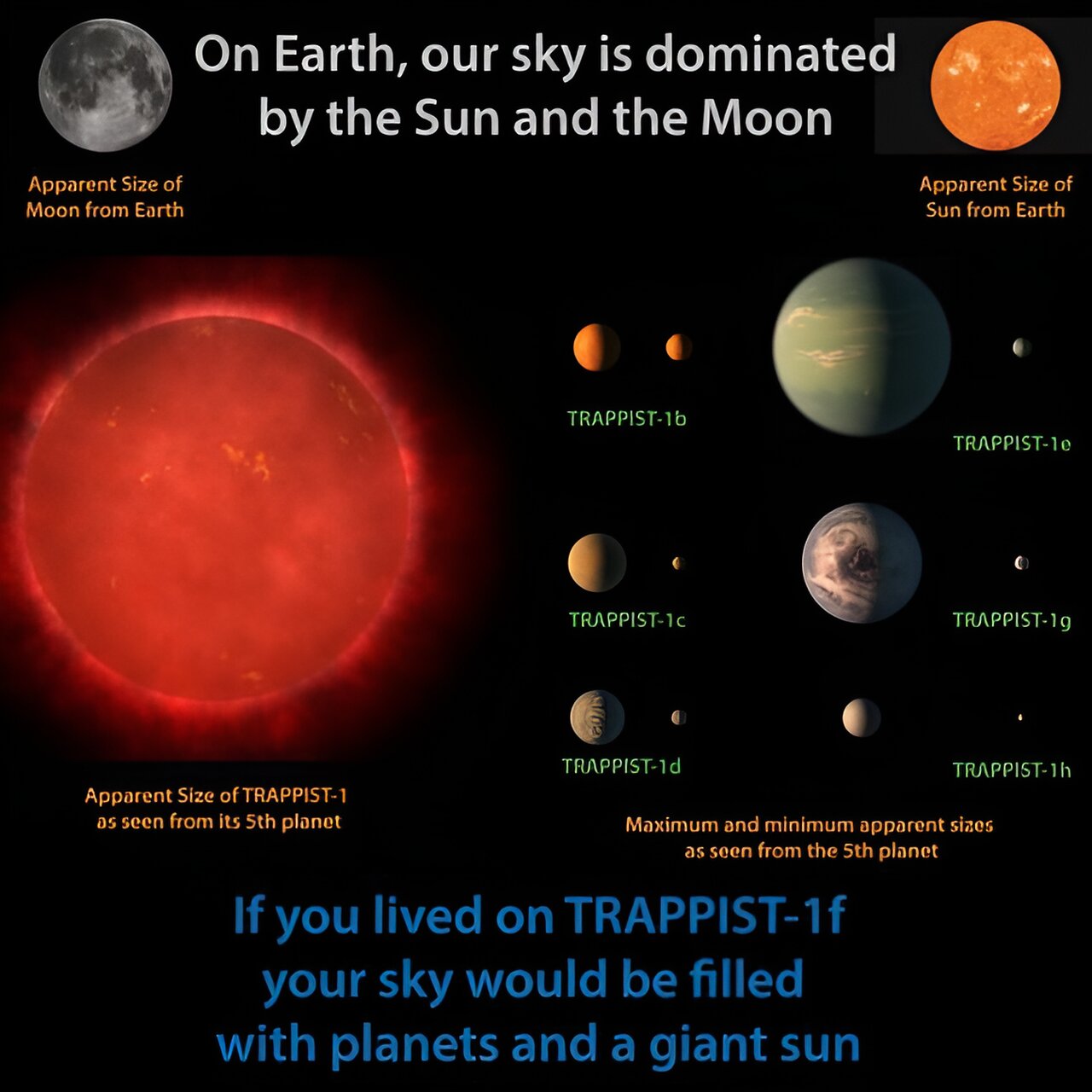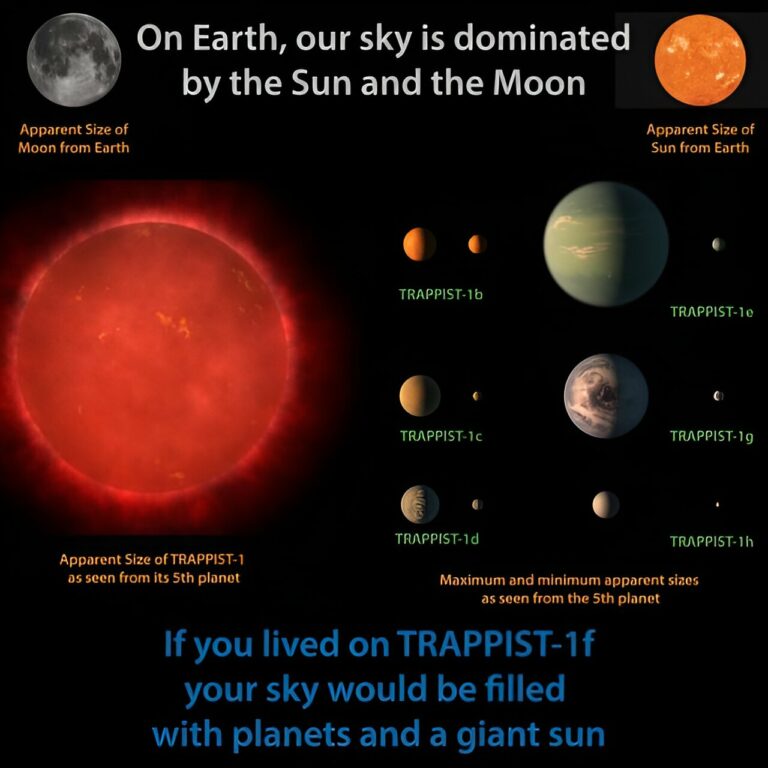The Atmospheres of the TRAPPIST-1 System Likely Disappeared Long Ago
The Trappist-1 exoplanetary system has captivated scientists and space enthusiasts alike. With seven worlds orbiting a red dwarf star just 40 light-years away, it presents an intriguing possibility of multiple habitable planets in close proximity. However, a recent study suggests that this dream may not be a reality. It is more likely that the planets in the Trappist system are barren and devoid of atmospheres.
Since its discovery in 2017, the Trappist system has garnered significant attention due to its resemblance to our own inner solar system. The presence of warm terrestrial worlds initially sparked hope for the existence of alien life. However, the suitability of red dwarf stars for habitable worlds has always been a question. These stars are much cooler than our sun, necessitating close orbits for any potentially habitable planet. Additionally, red dwarfs are known for their intense solar flares, which can subject nearby planets to harmful X-rays and other hazards. The ability of life to withstand such threats over billions of years remains uncertain. If Trappist-1 is representative of red dwarf systems, the chances of life existing there appear slim.
A recent study published in Astronomy & Astrophysics delves into the potential atmospheres of the Trappist planets. Observations from the James Webb Space Telescope (JWST) have confirmed the absence of significant atmospheres in the two innermost planets, which was expected as even our own Mercury lacks an atmosphere. However, it was previously believed that the cooler and more distant planets in the Trappist system could maintain atmospheres. To investigate this further, the research team turned to computer simulations.
In conclusion, while the Trappist-1 system initially seemed like a promising candidate for hosting life, the latest study suggests otherwise. The lack of substantial atmospheres on the innermost planets raises doubts about the habitability of the entire system. Nevertheless, the exploration and study of exoplanetary systems like Trappist-1 continue to provide valuable insights into the possibilities and limitations of life beyond our own planet.

The authors conducted a study on Trappist-1 and other red dwarf stars, analyzing their observations to determine the amount of high-energy radiation emitted by these stars over time. They then simulated the impact of this radiation on the early atmospheres of the outer Trappist exoplanets, ultimately modeling the rate of atmospheric evaporation. It was discovered that all planets, including Earth, experience some degree of atmospheric loss over time. However, the Trappist worlds undergo a significant and rapid loss of atmosphere.
Based on the current radiation levels of Trappist-1, even its outer planets would lose an atmosphere equivalent to that of Earth within a few hundred million years. This suggests that the Trappist worlds, similar to Earth, Mars, and Venus in their early stages, would have had thick atmospheres. Nevertheless, due to the higher levels of high-energy radiation emitted by young red dwarfs, the evaporation of atmospheres occurs at an accelerated pace. Considering that Trappist-1 is approximately 8 billion years old, older than our sun, it is highly likely that any atmosphere the Trappist worlds once possessed has long dissipated. Consequently, the Trappist-1 system is most likely comprised of barren, arid planets. This scenario could potentially apply to numerous other red dwarf systems as well. This revelation carries significant implications for the existence of extraterrestrial life.
Red dwarfs constitute approximately 75% of the stars in our galaxy, in contrast to sun-like stars which make up only 8%. If red dwarfs deplete the atmospheres of their planetary systems, it suggests that the majority of these systems are devoid of life. Therefore, upon reflection, the vibrant and thriving life we observe may be far more scarce than previously believed.
This article is republished from PhysORG under a Creative Commons license. Read the original article.
Do not forget to share your opinion with us to provide you with the best posts !




0 Comments